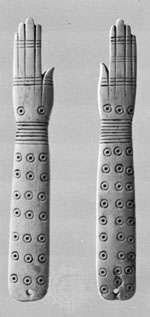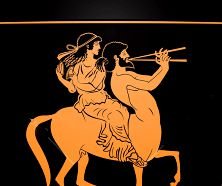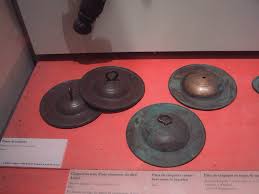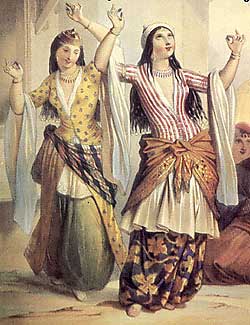FROM BASE TO BRASS
wood/copper/bronze/brass/german silver

Wooden clappers have been around since the earliest civilisations dating from beyond 3000BC. They were basic small domed shaped instruments or small hands and arms made from wood, ivory or bone. These early cymbals/clappers found in Egypt were associated with magic and ritual and the goddess Hathor. The first metal cymbals were made in Mesopotamia with the discovery of copper.
With the onset of the discovery of bronze, 2000BC-500BC, so did the development of weapons, large cities, writing, and social beliefs. People came together in large groups to dance, make music, sing, and the production of cymbals had an upgrade.

The new cymbals were stronger, more durable and sounded better!
many have been found in archeological digs and painted on Egyptian and Grecian pottery.
“Because the human hand hasn’t changed significantly in design and shape, ancient finger cymbals are about the same configuration as modern instruments. The length of the fingers determines the maximum and minimum size possible. Consequently finger cymbals of great antiquity closely resemble their modern descendants. Bronze zills also sounded much better than than earlier copper varieties.”
Excerpt from SHE’S GOT HIPS
Brass production wasn’t widespread till the Industrial Revolution in the late 1800’s. Instruments like the flute and French horn were created. Finger cymbals were introduced to the West when the Ghawazee from Egypt danced at the Worlds Fair in the late 1800’s. Many of the Orientalist painters from this era show dancers performing with zills.

From the advances of metal craft in the 1900’s comes a new invention called German Silver, an alloy of nickel and copper, that closely resembles silver. It doesnt tarnish and has a lovely “ringing” tone when made into instruments. Modern companies such as Saroyan, make their zills from this alloy, and their sweet sound fill the Tribal Bellydance world!
By pursuing our skill and knowledge of cymbals, sagats, zills we honour these ancient instruments.
“But if we play them forward, we will continue to preserve and transmit this ancient legacy literally in our hands.” Yasmin Henkesh
DIFFERENT CULTURES
EGYPTIAN
The Ghawazee of Egypt are known for playing SAGATS and are a one-holed style. The sound and shape of the sagat are quite different from Zills, being more domed and lower sounding.
TURKISH
Called"ZILLERI" in Turkish, they were commonly used in Ottoman military bands and developed into similar ones to the Egyptian Sagat. The modern style has two slots, which allows the ribbon/elastic to be tied to hold the cymbals steady. This gives the dancer more control over the instrument.
Medieval Turkish dancers and musicians used wooden spoons, and are still used for folk music today.
BERBERS
The Berbers use a KARKABA, a large set of cymbals attached together by a handle. There are many different variations of these-Moroccans use the iron castanets of the Gnawa people.
FLAMENCO
Flamenco developed over the centuries with influences from Spanish folk, North Africa and the Romani. They utilise wooden clappers called CASTANETS.
INDIAN
In India dancers use cymbals called MANJIRA. These are metal cymbals tied and clapped together, often used as part of rituals.
GREEKS AND ROMANS
Roman artefacts show dancers and musician celebrating pagan festivals of Cybele and Dionysus with cymbals and drums.
CYMBAL is the greek for “KYMBALA”.
REFERENCES:
Gilded Serpent
Middle Eastern dance
Ancient
Shes Got Hips

